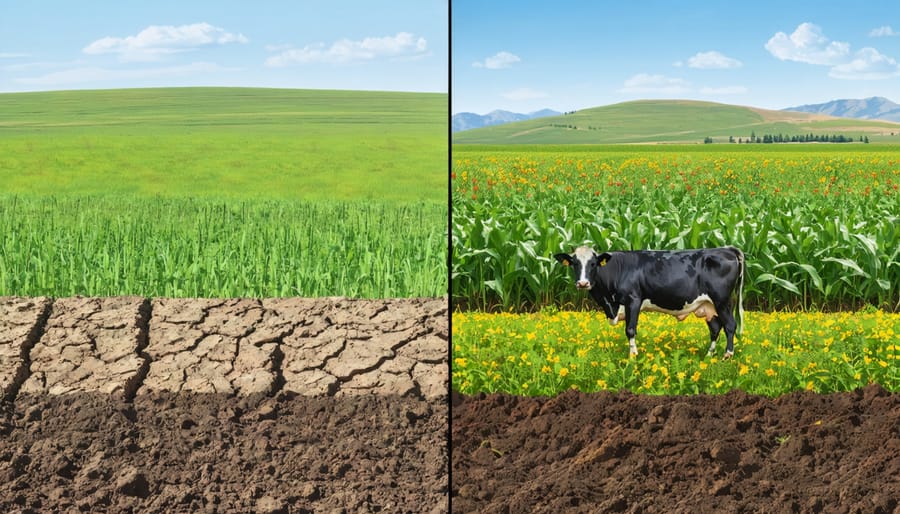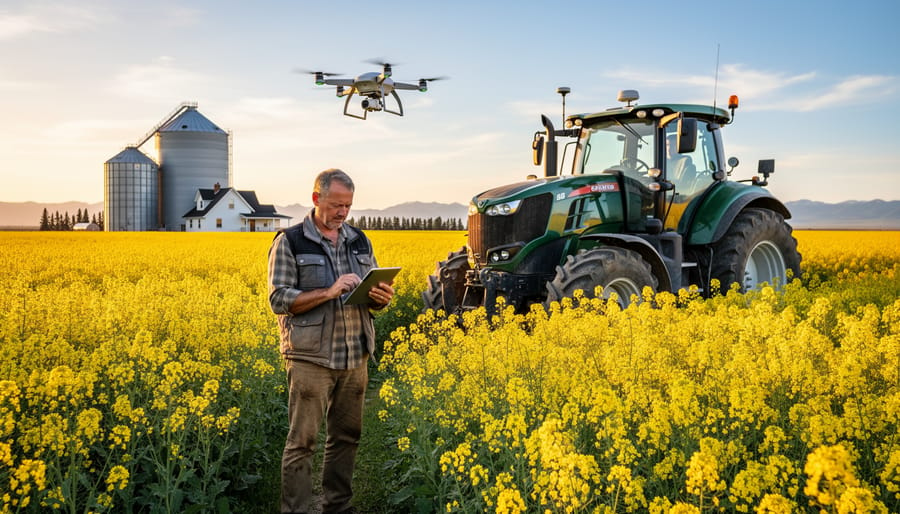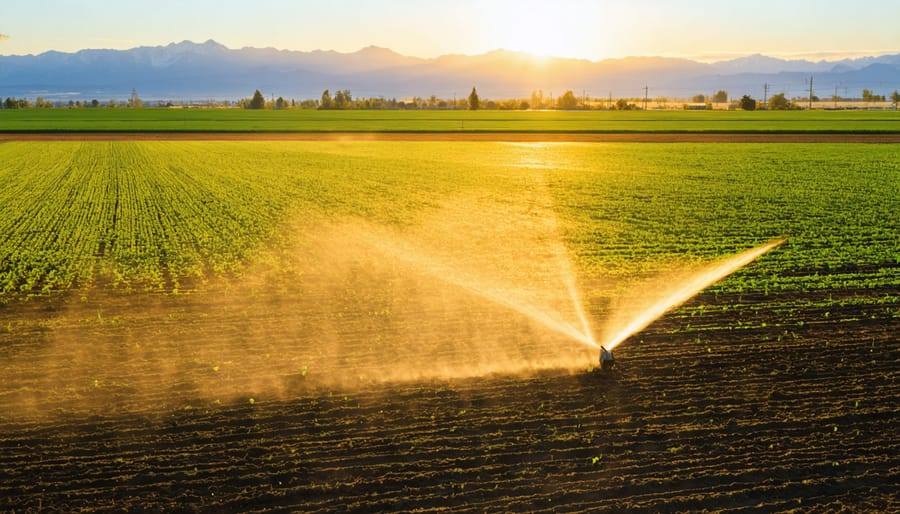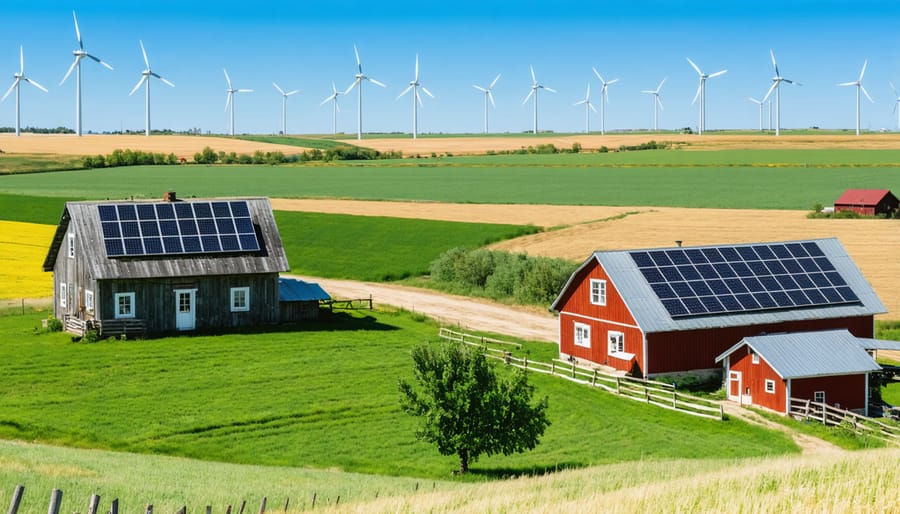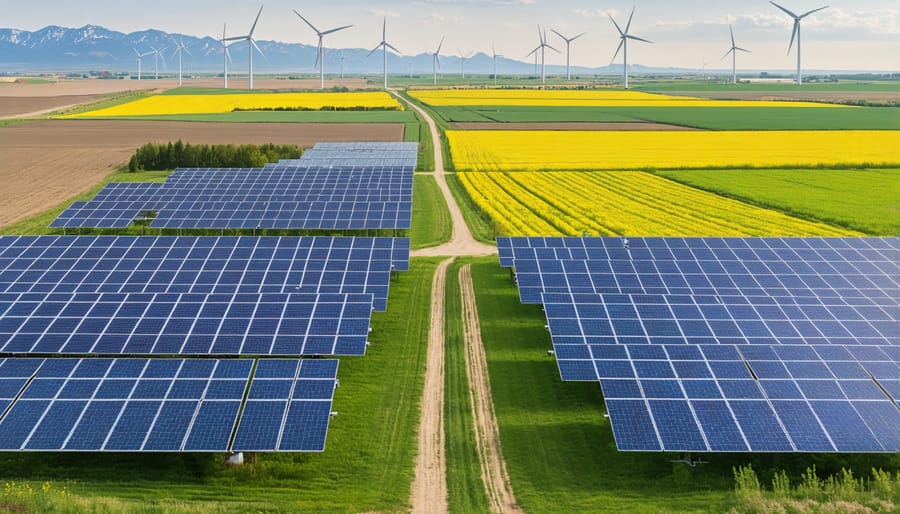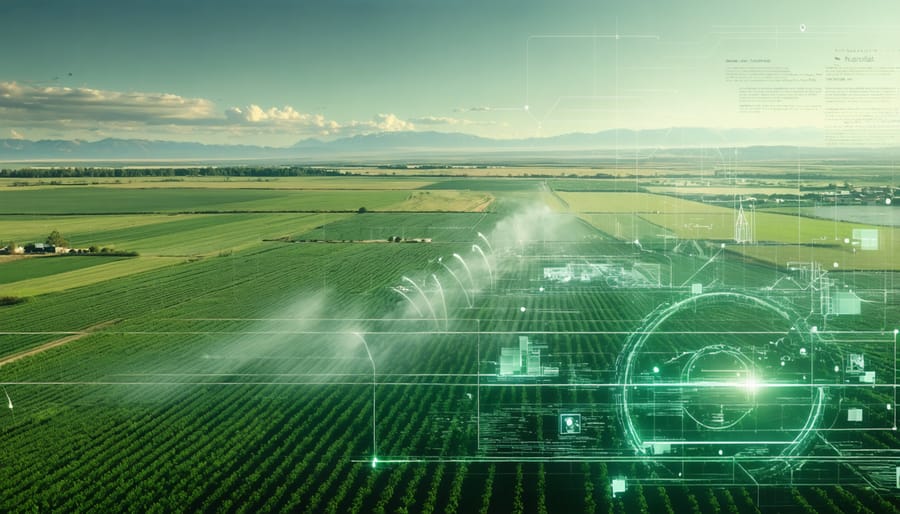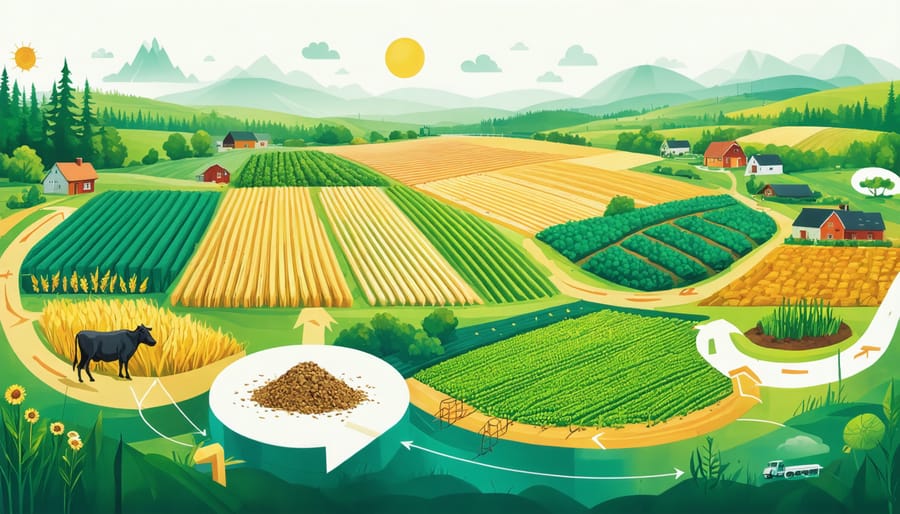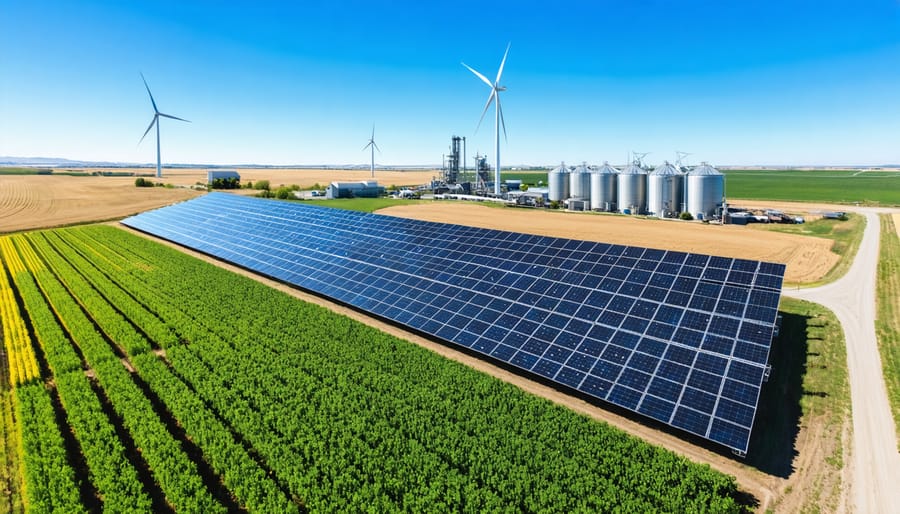Transform depleted soil into thriving ecosystems through regenerative agriculture – a revolutionary approach that’s helping Alberta farmers increase yields by up to 40% while sequestering carbon and rebuilding soil health. Across the Canadian prairies, innovative producers are abandoning conventional tilling methods in favor of cover cropping, rotational grazing, and biological soil amendments, creating resilient agricultural systems that work with nature rather than against it.
From the rich black soils of central Alberta to the challenging growing conditions of the northern regions, farmers are discovering that regenerative practices don’t just protect the environment – they protect profits. By minimizing inputs, increasing water retention, and building organic matter, these methods create self-sustaining systems that weather both market volatility and climate extremes.
The evidence is compelling: farms implementing regenerative practices report 60% lower input costs, improved drought resistance, and soil organic matter increases of 1-2% within five years. For Canadian producers facing rising fertilizer prices and unpredictable weather patterns, regenerative agriculture offers a practical path forward that aligns environmental stewardship with economic sustainability.
This transformation isn’t just about changing farming practices – it’s about reimagining our relationship with the land for future generations. As more Alberta farmers embrace these methods, they’re not only producing nutrient-dense food but also becoming active participants in climate change mitigation and ecosystem restoration.
The Soil Revolution Taking Root in Alberta
Beyond Organic: What Makes Farming Truly Regenerative
While organic farming focuses primarily on avoiding synthetic inputs, regenerative agriculture takes sustainability several steps further. Here in Alberta, we’re seeing farmers embrace practices that not only maintain but actively improve their land’s health and productivity.
The key distinction lies in the approach to soil management. Organic certification ensures you’re not using harmful chemicals, but regenerative practices actively build soil organic matter and enhance biodiversity. For instance, many Alberta farmers are combining livestock grazing with crop rotation to mirror natural ecosystems, resulting in better soil structure and increased carbon sequestration.
Water management also differs significantly. While organic farming might use approved natural pesticides and traditional irrigation methods, regenerative practices focus on building soil that naturally retains water. Local farmers report using up to 40% less irrigation water after implementing these methods.
Biodiversity is another crucial factor. Regenerative farms typically maintain diverse plant species, beneficial insects, and soil microorganisms working together in a balanced system. This creates resilient ecosystems that can better withstand our prairie climate extremes.
Perhaps most importantly, regenerative agriculture emphasizes continuous improvement rather than meeting specific certification standards. It’s about creating a positive feedback loop where each season’s practices build upon the success of the previous one, leading to increasingly healthy and productive farmland.
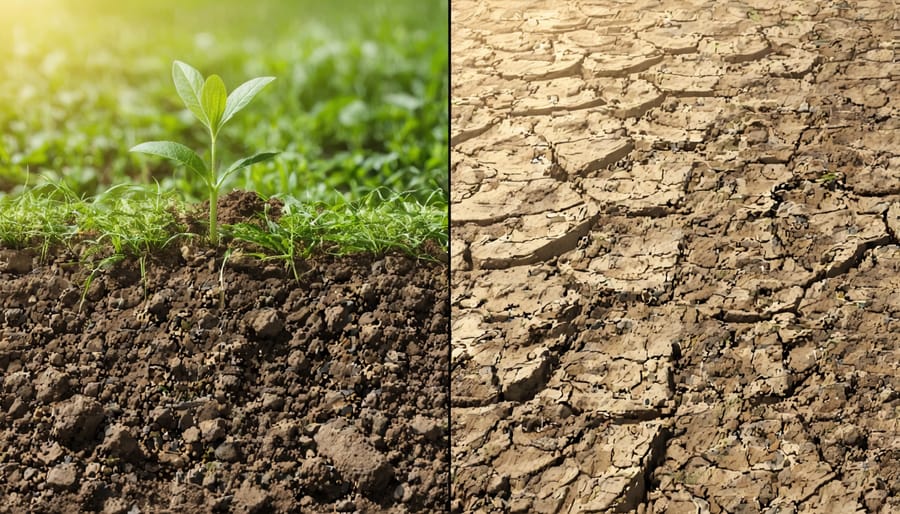
Real Results from Alberta’s Soil Champions
Meet Tom Anderson, a third-generation farmer from Lacombe County, who transformed his 2,000-hectare operation through regenerative practices. By implementing no-till farming and diverse crop rotations, Tom reduced his input costs by 40% while improving soil organic matter by 2% over five years. His success with profitable organic farming strategies has inspired neighboring farms to follow suit.
In Sturgeon County, Sarah Martinez introduced cover crops and integrated livestock grazing on her 800-hectare farm. Her innovative approach led to a 30% increase in water retention and a significant reduction in soil erosion. During the 2021 drought, her fields maintained productivity while many conventional farms struggled.
The Peterson family in Mountain View County demonstrates the power of adaptive multi-paddock grazing. By rotating their 300-head cattle herd through carefully managed paddocks, they’ve restored native grasslands and increased soil carbon levels. Their meat now commands premium prices at local markets, proving that environmental stewardship and profitability can go hand in hand.
These success stories share common themes: patience during transition, commitment to soil health, and strong community support. Each farmer emphasizes the importance of starting small, learning from fellow producers, and adapting practices to suit local conditions. Their results show that regenerative agriculture isn’t just environmentally sound – it’s economically viable in Alberta’s diverse agricultural landscape.
Core Regenerative Practices That Work in Our Climate
No-Till Farming in Cold Climates
In Alberta’s challenging climate, implementing no-till farming practices requires careful planning but offers significant benefits for soil health and crop resilience. Success in cold climates starts with proper residue management in fall, leaving adequate crop stubble to protect soil through winter and trap essential snow cover.
For spring seeding, timing is crucial. Wait until soil temperatures reach 5°C at planting depth, typically 2-3 weeks later than conventional tillage systems. Using specialized equipment like low-disturbance openers helps maintain soil structure while ensuring good seed-to-soil contact in cool conditions.
Cover crops adapted to short growing seasons, such as fall rye or winter wheat, provide additional soil protection and organic matter. Consider terminating these crops early in spring to prevent moisture competition with cash crops.
Managing excess moisture is vital in Alberta’s clay-rich soils. Establish proper drainage channels and consider implementing controlled traffic farming to reduce compaction. Many local farmers report improved soil structure and water infiltration within 3-5 years of transitioning to no-till.
The practice has shown particular success in moisture conservation, with local farmers reporting up to 25% reduction in irrigation needs. Despite initial challenges, no-till systems typically achieve comparable yields to conventional methods while significantly reducing fuel costs and improving soil health indicators.
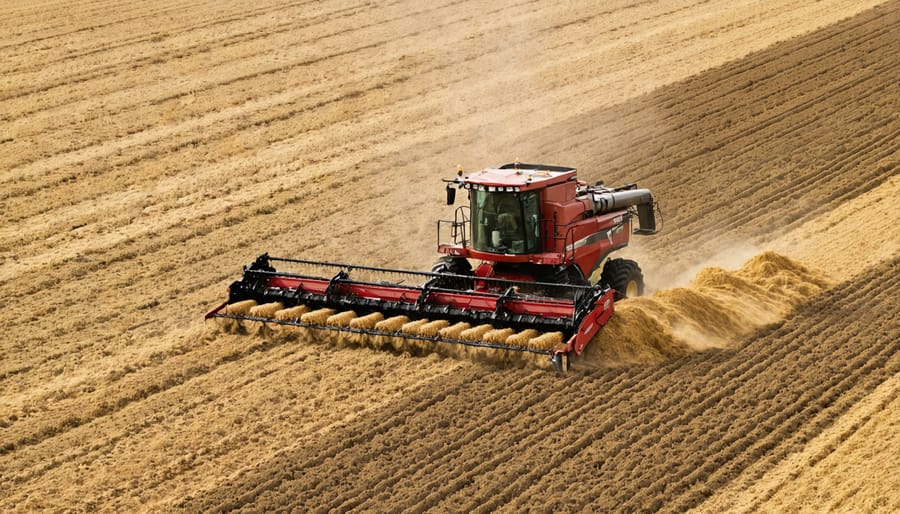
Cover Cropping for Prairie Soil Health
Cover crops are a cornerstone of soil health management in prairie regions, offering Alberta farmers effective solutions for protecting and enriching their soil throughout the year. When selecting cover crops, consider our unique climate challenges and shorter growing season.
Cold-hardy species like fall rye, winter wheat, and hairy vetch have proven particularly successful in our prairie conditions. These crops establish quickly and provide excellent soil protection during our harsh winters. For summer coverage, drought-tolerant options like clover, field peas, and mustard varieties work well between main crop rotations.
Local farmer Tom Henderson from Lacombe shares, “We’ve seen remarkable improvements in soil structure since introducing a mix of fall rye and field peas as cover crops. Our wind erosion issues have practically disappeared, and we’re noticing better moisture retention.”
To maximize benefits, timing is crucial. Plant winter-hardy varieties 4-6 weeks before the first expected frost to ensure proper establishment. For spring plantings, seed as soon as soil temperatures reach 5°C. Consider companion planting different species – combining grasses with legumes provides both soil structure and nitrogen-fixing benefits.
Management tips:
– Monitor soil moisture levels during establishment
– Terminate cover crops 2-3 weeks before planting main crops
– Use roller-crimping for natural termination when possible
– Consider grazing as part of your management strategy to maximize returns
Remember, successful cover cropping requires patience and observation. Start with small trial areas to determine what works best for your specific conditions.
Rotational Grazing Success Stories
The Smith family farm in Lacombe County stands as a shining example of successful rotational grazing integration. Over the past five years, they’ve transformed 300 hectares of traditional cropland into a thriving mixed operation. By dividing their land into 20 paddocks and moving their cattle every three to four days, they’ve witnessed remarkable soil improvement and increased biodiversity.
“We’ve seen our organic matter increase from 2% to 4.5% in just four years,” shares Sarah Smith. “The cattle are doing the work for us, naturally fertilizing the soil and controlling weeds.”
In Southern Alberta, the Thompson Ranch has pioneered a unique approach by integrating sheep into their crop rotation system. Their 200-head flock grazes cover crops during shoulder seasons, reducing feed costs while building soil health. The practice has cut their fertilizer use by 30% and improved water retention significantly.
The Mountain View Collective, a group of five farms near Olds, demonstrates the community aspect of rotational grazing. These farmers share resources and grazing schedules, allowing their combined 500 head of cattle to move efficiently between properties. This collaboration has led to a 40% reduction in equipment costs and improved pasture recovery times.
These success stories show that rotational grazing isn’t just environmentally sound – it’s economically viable. The key is starting small, learning from neighbours, and gradually expanding based on your land’s specific needs.
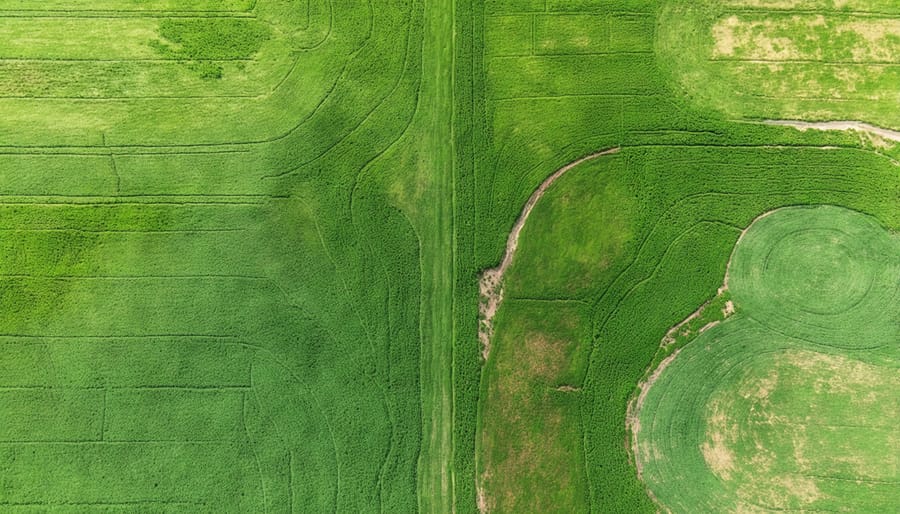
Building Soil Biology in Northern Latitudes
Building healthy soil biology in northern climates presents unique challenges, but Alberta farmers are discovering innovative solutions through climate-smart farming practices. The key lies in maximizing the short growing season while protecting soil microorganisms during harsh winters.
Cover cropping with cold-hardy species like fall rye and hairy vetch helps maintain living roots in the soil during shoulder seasons. These plants provide food for beneficial microorganisms and protect them from extreme temperature fluctuations. Many Alberta farmers have success with “cocktail covers” – mixing 3-5 species that serve different biological functions.
Reducing tillage is crucial in northern regions where organic matter decomposition happens more slowly. Consider using strip-till or no-till methods, combined with strategic mulching to insulate soil life. Adding organic amendments like compost and manure in fall gives microorganisms time to process nutrients before spring planting.
Inoculation with mycorrhizal fungi and beneficial bacteria can jumpstart soil biology, especially after harsh winters. Local success stories show that applying biological amendments when soil temperatures reach 10°C provides optimal conditions for microbial establishment.
Remember that building soil biology is a gradual process – focus on consistent practices rather than quick fixes. Monitor progress through simple soil tests like earthworm counts and decomposition rates of buried cotton strips. Connect with other northern farmers through soil health networks to share regional strategies and experiences.
Making the Transition: Practical Steps and Support
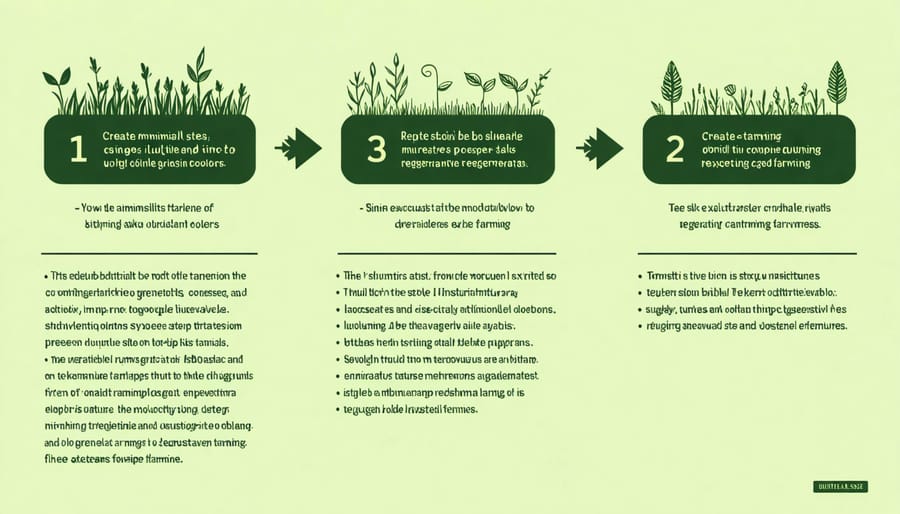
First Steps: Starting Small and Scaling Up
Starting your journey toward regenerative agriculture doesn’t require an immediate overhaul of your entire operation. Many successful Alberta farmers began with small, manageable changes that grew into comprehensive systems. The key is to identify one or two practices that align with your current operations and gradually expand from there.
Consider beginning with soil testing to establish your baseline. This simple step helps you track improvements and make informed decisions. Next, choose a single field or a small portion of your land—perhaps 2-4 hectares—to experiment with new practices. This approach minimizes risk while allowing you to gain valuable experience.
Many Alberta farmers start their transition to sustainable farming by introducing cover crops. Winter rye or field peas are excellent options for our climate, providing soil protection during harsh prairie winters while building organic matter. Start with these crops on a small scale, perhaps as part of your rotation on that test plot.
Another practical first step is reducing tillage intensity. You don’t need to switch to no-till immediately; instead, try reducing tillage frequency or implementing strip-tillage on your test plot. This gradual approach helps you adapt your equipment and management strategies while observing the results.
Keep detailed records of your observations, including soil conditions, weather patterns, and crop responses. These records become invaluable as you scale up your regenerative practices. Connect with local farming groups and attend workshops—Alberta has a strong network of farmers practicing regenerative agriculture who are often willing to share their experiences.
Remember that scaling up should follow success at a smaller scale. Once you’re comfortable with initial practices and seeing positive results, gradually expand to larger areas. This measured approach helps manage both risk and learning curves while building confidence in regenerative methods.
Local Resources and Expert Support
Alberta farmers looking to transition to regenerative agriculture have access to numerous local resources and support networks. The Alberta Regenerative Agriculture Network (ARAN) connects farmers across the province, offering mentorship programs, field days, and workshops throughout the growing season.
The Agriculture and Agri-Food Canada (AAFC) provides research support and funding opportunities through various programs, including the Agricultural Clean Technology Program, which helps farmers adopt sustainable practices. Local agricultural societies and extension offices offer personalized guidance and can connect you with experienced regenerative farmers in your area.
Several certified agronomists specializing in regenerative practices are available for consultation throughout Alberta. These experts can help develop transition plans tailored to your specific soil conditions, climate challenges, and production goals. The University of Alberta’s Faculty of Agricultural, Life & Environmental Sciences regularly hosts educational events and maintains demonstration plots showcasing regenerative techniques.
For hands-on learning, the Young Agrarians network organizes farm tours and networking events, allowing you to see regenerative practices in action and connect with successful practitioners. The Alberta Soil Health Coalition provides soil testing services and interpretation support to help you track your progress.
Financial assistance is available through organizations like Farm Credit Canada and the Canadian Agricultural Partnership, which offer grants and loans specifically for sustainable agriculture initiatives. Your local Natural Resource Conservation Board office can provide additional guidance on water management and soil conservation strategies specific to your region.
Online communities, including the Canadian Regenerative Agriculture Alliance forum, provide platforms for sharing experiences, asking questions, and staying updated on the latest research and techniques.
Financial Incentives and Programs
Alberta farmers pursuing regenerative agriculture practices have access to several financial incentives and support programs. The Canadian Agricultural Partnership (CAP) offers grants of up to $100,000 for implementing sustainable farming practices, including soil health improvements and water management systems. Similar to financial support for organic farmers, these programs help offset initial implementation costs.
The Environmental Stewardship and Climate Change Producer Program provides cost-sharing opportunities for farmers transitioning to regenerative practices, covering up to 70% of eligible expenses. Local agricultural societies and conservation authorities often offer additional funding through regional initiatives.
ALUS Canada (Alternative Land Use Services) compensates farmers for maintaining ecosystem services on their land, with annual payments ranging from $15 to $150 per acre depending on the project type. The program specifically supports practices like riparian area restoration and establishment of native species.
Farm Credit Canada offers specialized lending programs with favorable terms for sustainable agriculture projects, including extended repayment periods and lower interest rates for environmental improvements. The Alberta Carbon Offset System also provides opportunities for farmers to generate additional income through carbon credits.
Many agricultural organizations provide in-kind support through mentorship programs, technical assistance, and equipment-sharing initiatives. The Agricultural Research and Extension Council of Alberta (ARECA) coordinates demonstration farms and learning opportunities, helping farmers connect with experienced practitioners and reduce implementation costs through shared resources.
Farmers can access these programs through their local agricultural fieldman or by contacting Alberta Agriculture and Forestry’s regional offices. Regular workshops and information sessions are held throughout the province to help producers navigate available funding options and application processes.
As we look to the future of Canadian agriculture, the evidence supporting regenerative practices becomes increasingly compelling. Farmers across Alberta who have embraced these methods consistently report improved soil health, enhanced water retention, and stronger crop resilience – benefits that compound over time. Beyond the environmental advantages, many producers have seen reduced input costs and more stable yields, even during challenging weather conditions.
The long-term financial benefits are particularly noteworthy, with regenerative farmers reporting up to 40% reduction in fertilizer costs after three to five years of implementation. More importantly, these practices help build a legacy of healthy, productive land that will benefit future generations of agricultural producers.
The time to act is now. Whether you’re managing a large-scale operation or a small family farm, there are practical steps you can take today to begin your regenerative journey. Start small by implementing cover crops on a test plot or experimenting with reduced tillage on select fields. Connect with local farming networks and agricultural extension services that can provide guidance and support specific to your region’s unique conditions.
Remember, you’re not alone in this transition. Alberta’s farming community is known for its collaborative spirit, and there are numerous success stories from fellow producers who have already blazed this trail. The future of sustainable agriculture in Canada depends on the choices we make today. By embracing regenerative practices, we’re not just improving our operations – we’re contributing to a more resilient and sustainable agricultural future for all of Canada.
Take that first step. Your land, your community, and future generations will thank you for it.

